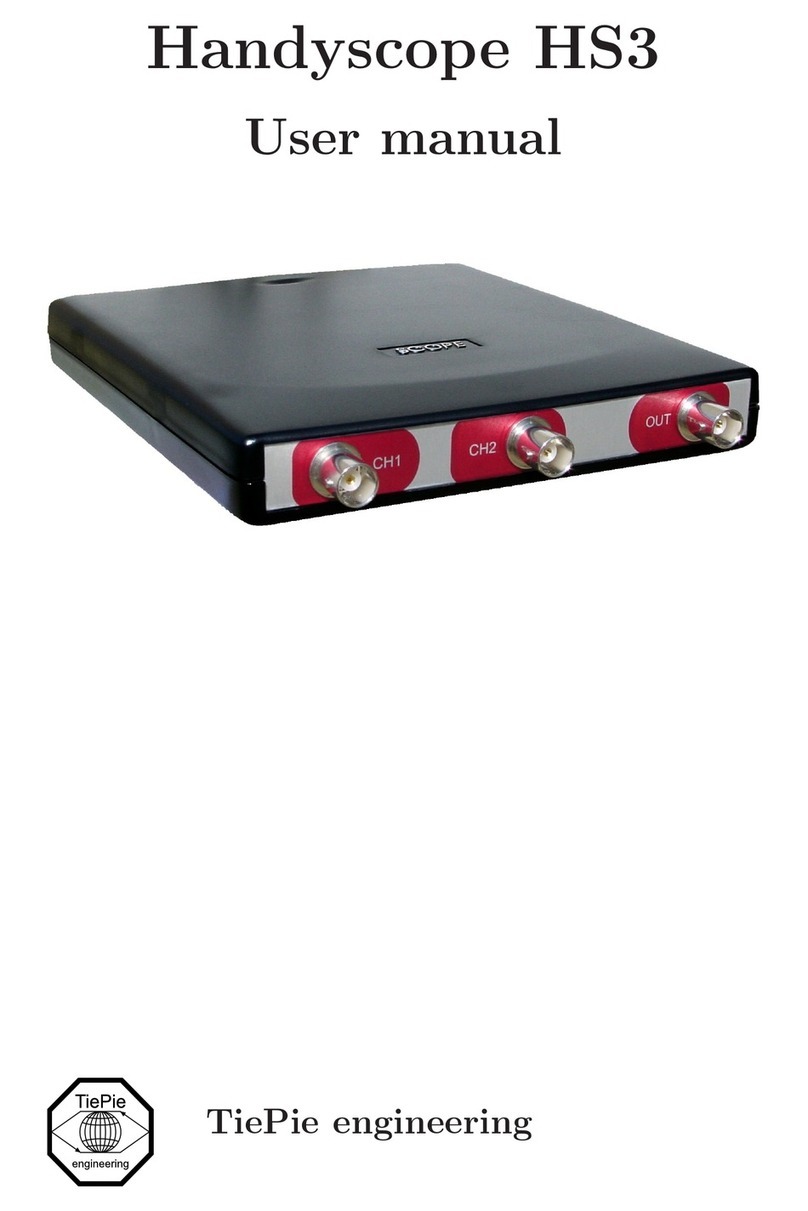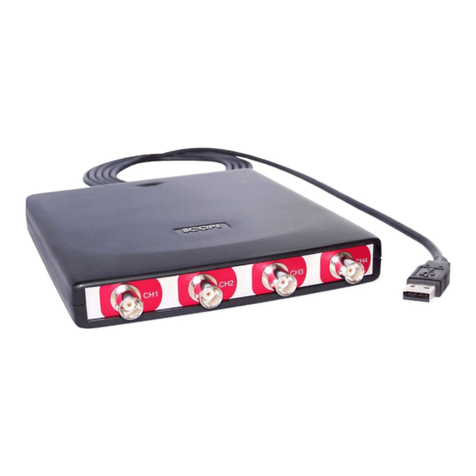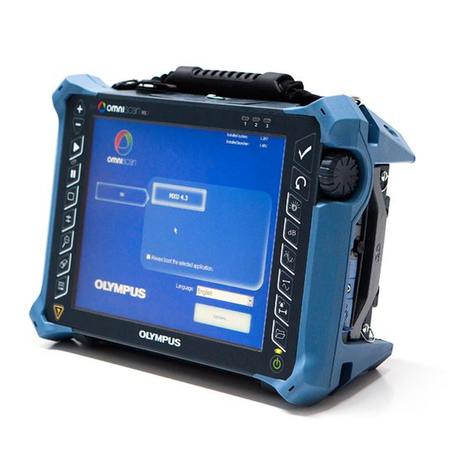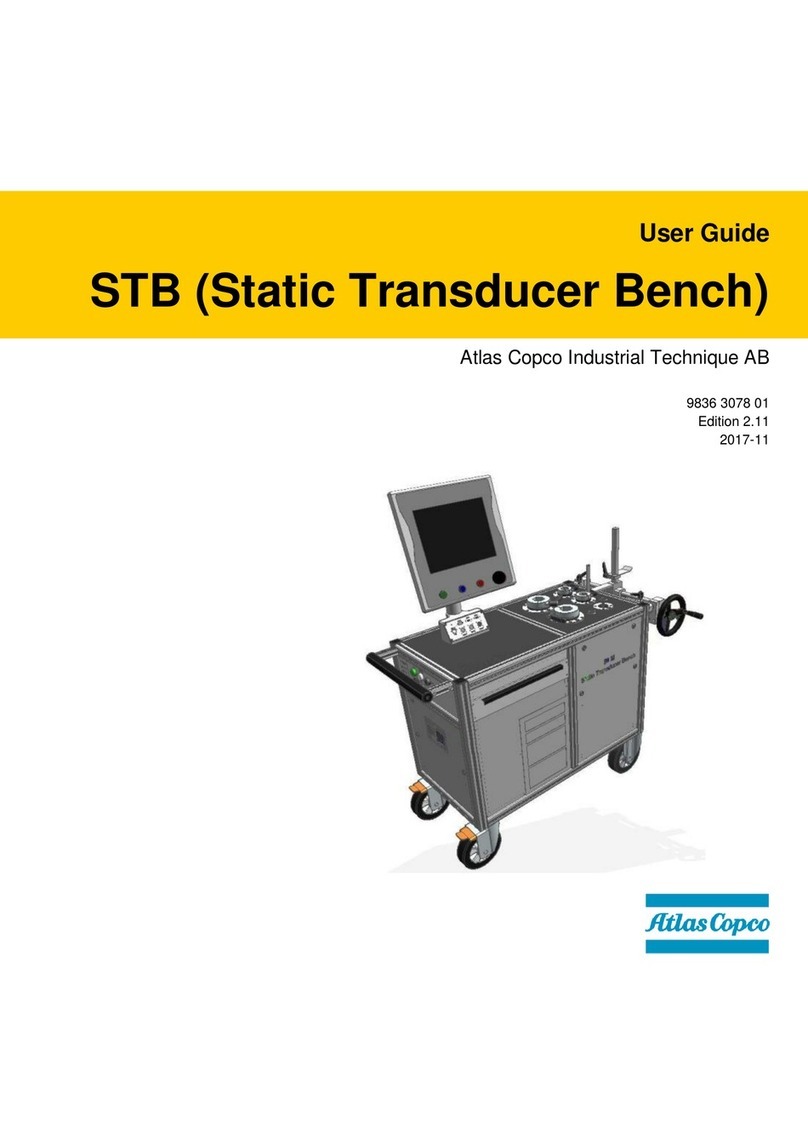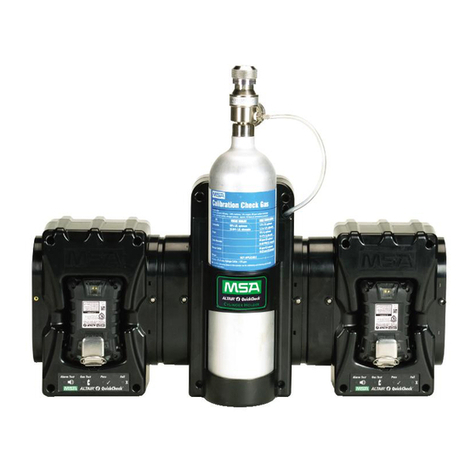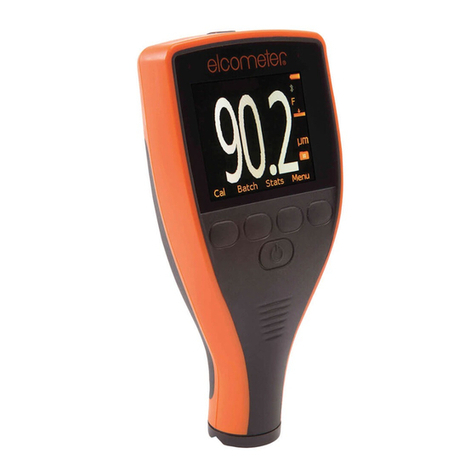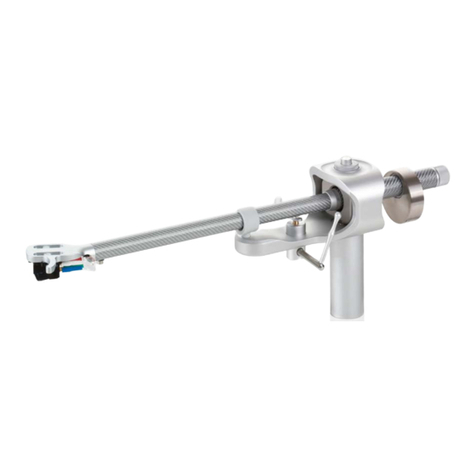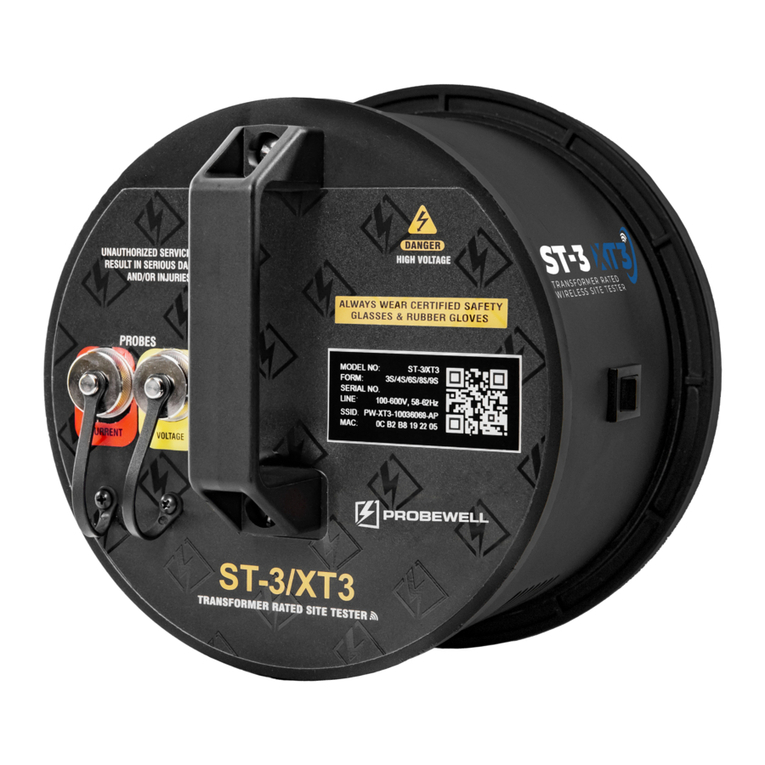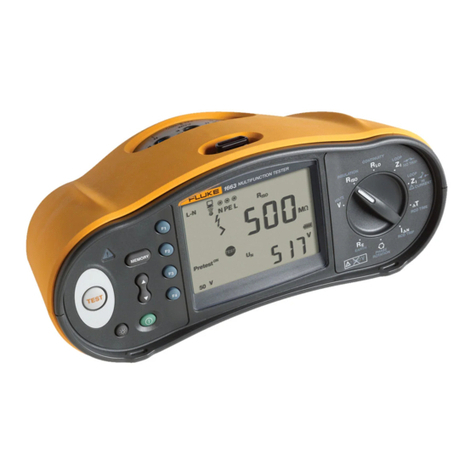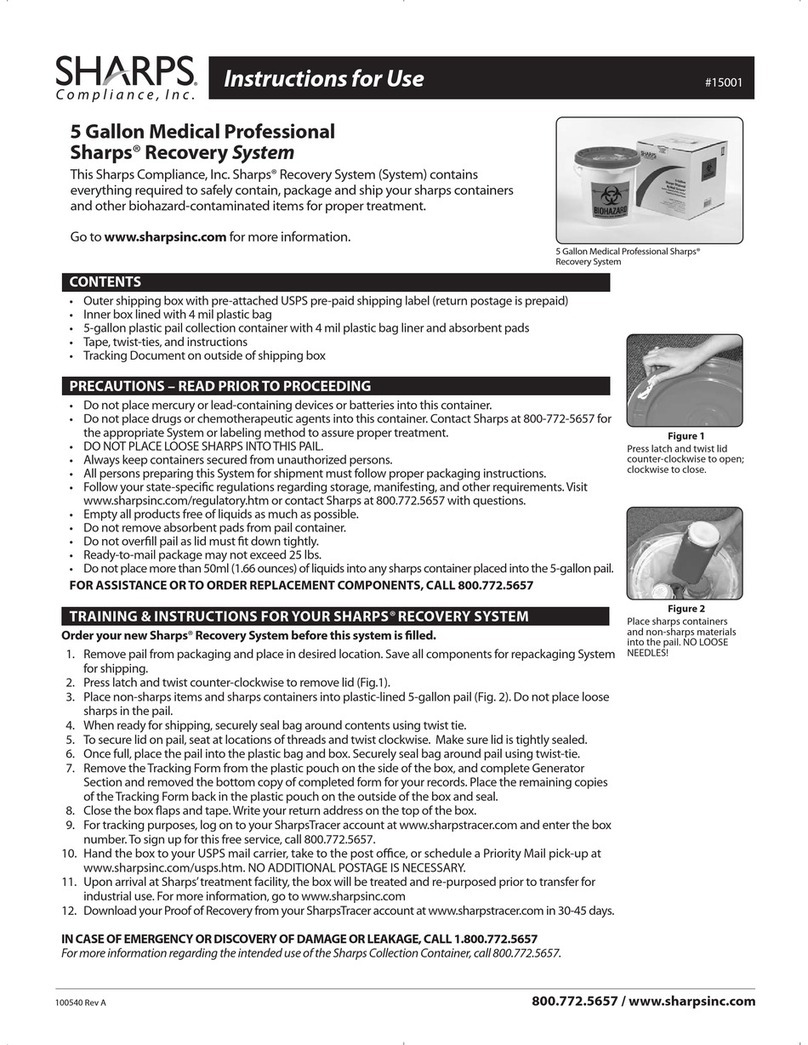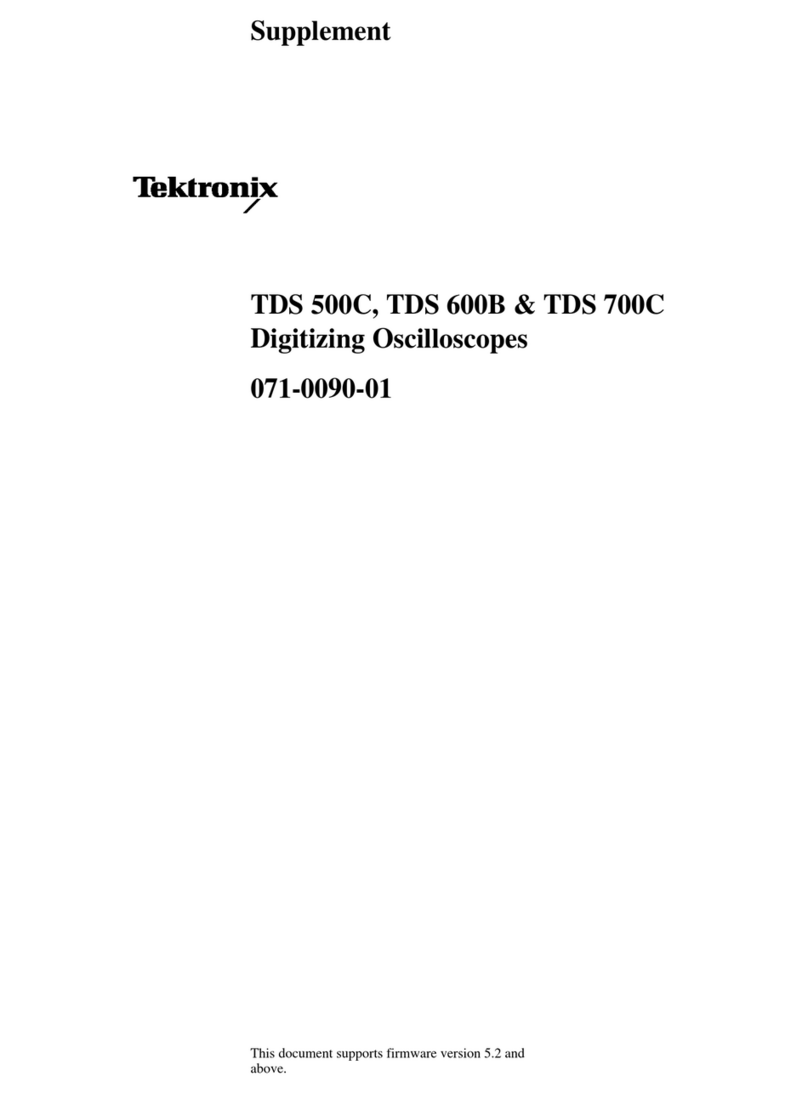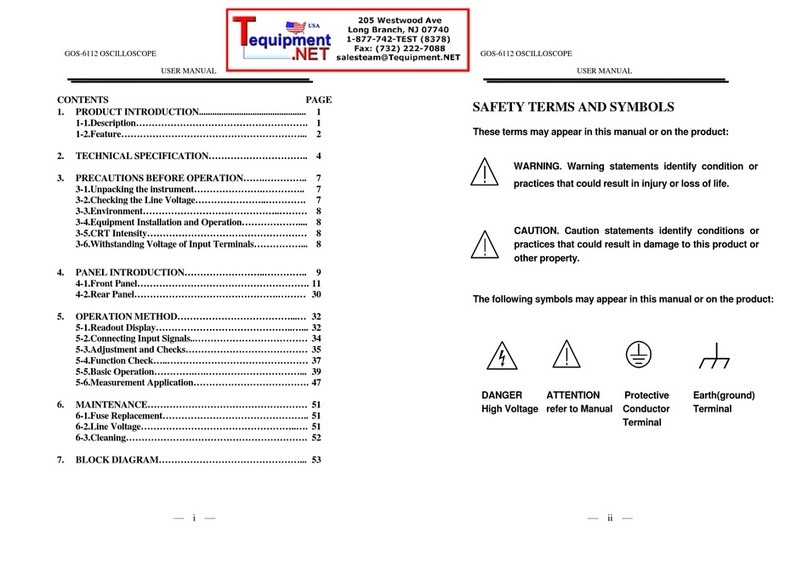TiePie WiFiScope WS6 User manual

WiFiScope WS6 DIFF
User manual
USB
Network
WiFi
Battery power
TiePie engineering

ATTENTION!
Measuring directly on the line voltage can be very dangerous.
Copyright ©2020 TiePie engineering.
All rights reserved.
Revision 2.27, February 2020
Despite the care taken for the compilation of this user man-
ual, TiePie engineering can not be held responsible for any
damage resulting from errors that may appear in this man-
ual.

Contents
1 Welcome 1
2 Safety 3
3 Declaration of conformity 5
4 Introduction 9
4.1 Differential input ........................... 11
4.1.1 SafeGround on each channel ............... 13
4.1.2 Differential attenuators ................... 14
4.1.3 Differential test lead .................... 15
4.2 Sampling ................................ 15
4.3 Sampling rate ............................. 16
4.3.1 Aliasing ............................ 17
4.4 Digitizing ................................ 18
4.5 Signal coupling ............................ 19
4.6 Probe compensation ......................... 19
5 Driver installation 23
5.1 Introduction .............................. 23
5.2 Computers running Windows 10 .................. 23
5.3 Computers running Windows 8 or older .............. 23
5.3.1 Where to find the driver setup ............... 23
5.3.2 Executing the installation utility .............. 23
6 Hardware installation 27
6.1 Power the instrument ........................ 27
6.1.1 Charging the battery .................... 28
6.1.2 Long term storage ..................... 28
6.2 Instrument operation mode ..................... 29
6.3 Connect via LAN ............................ 30
6.4 Connect via WiFi ............................ 31
6.4.1 The computer/laptop has WiFi ............... 31
Contents I

6.4.2 The computer/laptop has NO WiFi ............ 32
6.5 Connect via USB ............................ 34
6.5.1 Plug into a different USB port ............... 34
6.6 Operating conditions ......................... 34
7 Instrument ground compensation 35
7.1 Ground compensation cable ..................... 35
7.2 When using the the ground compensation cable ......... 35
7.3 When is the ground compensation not required ......... 36
7.4 Why ground compensation? ..................... 36
8 Combining instruments 37
9 Front panel 39
9.1 Channel input connectors ...................... 39
9.2 Power/Mode button ......................... 39
9.3 Status indicators ........................... 39
9.3.1 Status ............................ 39
9.3.2 LAN .............................. 39
9.3.3 WiFi .............................. 40
9.3.4 USB .............................. 40
9.3.5 Batt .............................. 40
10 Rear panel 41
10.1 Power ................................. 41
10.1.1 Power adapter ........................ 42
10.2 USB ................................... 42
10.3 LAN ................................... 42
10.4 Extension Connector ......................... 43
10.5 Ground connector .......................... 43
10.6 CMI ................................... 44
10.7 Ventilation slots ............................ 44
11 Specifications 45
11.1 Acquisition system .......................... 45
11.2 Acquisition system (continued) ................... 46
II

11.3 Trigger system ............................. 47
11.4 Power ................................. 47
11.5 Multi-instrument synchronization .................. 47
11.6 Probe calibration ........................... 48
11.7 Physical ................................. 48
11.8 I/O connectors ............................. 48
11.9 Interface ................................ 48
11.10 System requirements ......................... 48
11.11 Environmental conditions ...................... 48
11.12 Certifications and Compliances ................... 49
11.13 Measure leads ............................. 49
11.14 Differential attenuators ........................ 49
11.15 Package contents ........................... 50
11.16 Warranty ................................ 50
Contents III

IV

Welcome 1
Wireless measuring has now become a reality with the WiFiScope WS6 DIFF. If a
large distance needs to be bridged between the measuring instrument and the
PC, the WiFiScope WS6 DIFF is the solution for this. Fast measurements and high
speed data acquisition are now possible wherever the WiFiScope WS6 DIFF is lo-
cated in the world.
•Because the WiFiScope WS6 DIFF is battery-powered, it can be used stand-
alone for a long time.
•For measurements in hazardous situations or places where it is not acces-
sible to people for long, the WiFiScope WS6 DIFF offers the solution.
•A connection via WiFi or Network (LAN or WAN with possibly POE) gives the
user the possibility to place the measuring instrument where this was pre-
viously not possible.
•Collecting and viewing measurement data from different locations on a PC /
Laptop is now a possibility because the software supports more WiFiScopes
at the same time.
•With the very extensive software package, most measurements can be per-
formed.
•A large library of presets is available so that a novice user can immediately
perform advanced measurements with a few mouse clicks.
•The WiFiScope WS6 DIFF has 4 input channels with a maximum sampling
rate of 1 GSa/s and a bandwidth of 250 MHz.
•With a WiFi connection, the WiFiScope WS6 DIFF is no longer directly con-
nected to the PC or laptop and short circuits are excluded, this eliminates
the fear that something will happen to the PC or Laptop.
•A big advantage of the WiFiScopes is that no ground loops can occur. In
traditional measurement systems, ground loops give many problems, re-
sulting in unreliable measurement results. With the WiFiScope, because of
the absence of ground loops, long distance remote measurements are pos-
sible without the results being influenced by ground loops. Also on short
distances the absence of ground loops is important for performing reliable
measurements. The WiFiScope prevents ground loops from forming so that
the measurement speed and resolution are not affected and the measure-
ments remain reliable.
•Integrating the WiFiScope WS6 DIFF in your own software environment is
supported by an API with examples so that the WiFiScope WS6 DIFF can be
widely used
•Thanks to a very good hardware structure and advanced software drivers,
the WiFiScope WS6 DIFF is suitable for high speed data acquisition up to
speeds of 5 MSa/s and measurements up to 1 GSa/s with a record length of
256 MSamples of memory per channel with a resolution of 12 to 16 bit.
Welcome 1

2Chapter 1

Safety 2
When working with electricity, no instrument can guarantee complete safety.
It is the responsibility of the person who works with the instrument to op-
erate it in a safe way. Maximum security is achieved by selecting the proper
instruments and following safe working procedures. Safe working tips are
given below:
•Always work according (local) regulations.
•Work on installations with voltages higher than 25 VAC or 60 VDC should only
be performed by qualified personnel.
•Avoid working alone.
•Observe all indications on the WiFiScope WS6 DIFF before connecting any
wiring
•Check the probes/test leads for damages. Do not use them if they are dam-
aged
•Take care when measuring at voltages higher than 25 VAC or 60 VDC.
•Do not operate the equipment in an explosive atmosphere or in the pres-
ence of flammable gases or fumes.
•Do not use the equipment if it does not operate properly. Have the equip-
ment inspected by qualified service personal. If necessary, return the equip-
ment to TiePie engineering for service and repair to ensure that safety fea-
tures are maintained.
Safety 3


Declaration of conformity 3
TiePie engineering
Koperslagersstraat 37
8601 WL Sneek
The Netherlands
EC Declaration of conformity
We declare, on our own responsibility, that the product
WiFiScope WS6 DIFF-1000(XM/E/S/G)
WiFiScope WS6 DIFF-500(XM/S/G)
WiFiScope WS6 DIFF-200(XM/S/G)
for which this declaration is valid, is in compliance with
EC directive 2011/65/EU (the RoHS directive)
including up to amendement 2019/178,
and with
EN 55011:2016/A1:2017 IEC 61000-6-1:2019 EN
EN 55022:2011/C1:2011 IEC 61000-6-3:2007/A1:2011/C11:2012 EN
according the conditions of the EMC standard 2004/108/EC,
also with
Canada: ICES-001:2004 Australia/New Zealand: AS/NZS CISPR 11:2011
and
IEC 61010-1:2010/A1:2019 USA: UL 61010-1, Edition 3
and is categorized as 30 Vrms, 42 Vpk, 60 Vdc
Sneek, 10-1-2020
ir. A.P.W.M. Poelsma
Declaration of conformity 5

FCC statement
FCC 15.119
This device complies with Part 15 of FCC Rules. Operation is Subject to following
two conditions:
1. This device may not cause harmful interference, and
2. This device must accept any interference received including interference
that cause undesired operation.
FCC 15.105
This equipment has been tested and found to comply within the limits for a Class
B digital device, pursuant to part 15 of the FCC Rules. These limits are designed
to provide reasonable protection against harmful interference in a residential in-
stallation. This equipment generates, uses, and can radiate radio frequency energy
and, if not installed and used in accordance with the instructions, may cause harm-
ful interference to radio communications. However, there is no guarantee that in-
terference will not occur in a particular installation. If this equipment does cause
harmful interference to radio or television reception, which can be determined by
turning the equipment off and on, the user is encouraged to try to correct the
interference by one or more of the following measures:
•Reorient or relocate the receiving antenna
•Increase the separation between the equipment and receiver
•Connect the equipment into an outlet on a different circuit from that to
which the receiver is connected.
•Consult the dealer or an experienced radio/TV technician for help.
Any changes or modifications not expressly approved by TiePie engineering can
void the authority to operate equipment.
This equipment complies with FCC radiation exposure limits set forth for an un-
controlled environment. This equipment should be installed and operated with
minimum distance of 20cm between the radiator and your body
Environmental considerations
This section provides information about the environmental impact of the WiFi-
Scope WS6 DIFF.
End-of-life handling
Production of the WiFiScope WS6 DIFF required the extraction and use
of natural resources. The equipment may contain substances that could
be harmful to the environment or human health if improperly handled
at the WiFiScope WS6 DIFF’s end of life.
In order to avoid release of such substances into the environment and to reduce
the use of natural resources, recycle the WiFiScope WS6 DIFF in an appropriate
system that will ensure that most of the materials are reused or recycled appro-
priately.
6Chapter 3

The shown symbol indicates that the WiFiScope WS6 DIFF complies with the Euro-
pean Union’s requirements according to Directive 2002/96/EC on waste electrical
and electronic equipment (WEEE).
Declaration of conformity 7

8Chapter 3

Introduction 4
Before using the WiFiScope WS6 DIFF first read chapter 2about safety.
Many technicians investigate electrical signals. Though the measurement may not
be electrical, the physical variable is often converted to an electrical signal, with
a special transducer. Common transducers are accelerometers, pressure probes,
current clamps and temperature probes. The advantages of converting the phys-
ical parameters to electrical signals are large, since many instruments for examin-
ing electrical signals are available.
The WiFiScope WS6 DIFF is a portable four channel measuring instrument with
differential inputs. It can be connected to the computer via USB, wired ethernet
and WiFi. When used via WiFi, the WiFiScope WS6 DIFF can be connected to an
existing WiFi network or can act as access point to create its own WiFi network.
The WiFiScope WS6 DIFF is equipped with a built-in battery for wireless operation,
but can also be powered by an external power supply (incluced in the package) or
via the USB interface.
It is available in several models with different maximum sampling rates. The native
resolutions are 8, 12 and 14 bits and a user selectable resolution of 16 bits is
available too, with adjusted maximum sampling rates:
Measuring Model
Resolution Channels WS6-1000 WS6-500 WS6-200
8 bit
1 ch 1 GSa/s 500 MSa/s 200 MSa/s
2 ch 500 MSa/s 200 MSa/s 100 MSa/s
3 or 4 ch 200 MSa/s 100 MSa/s 50 MSa/s
12 bit
1 ch 500 MSa/s 200 MSa/s 100 MSa/s
2 ch 200 MSa/s 100 MSa/s 50 MSa/s
3 or 4 ch 100 MSa/s 50 MSa/s 20 MSa/s
14 bit 1 to 4 ch 100 MSa/s 50 MSa/s 20 MSa/s
16 bit 1 to 4 ch 6.25 MSa/s 3.125 MSa/s 1.25 MSa/s
Table 4.1: Maximum sampling rates
Introduction 9

The WiFiScope WS6 DIFF supports high speed continuous streaming measure-
ments. The maximum streaming rates when connected to a USB 3.0 port are:
Measuring Model
Resolution Channels WS6-1000 WS6-500 WS6-200
8 bit
1 ch 200 MSa/s1100 MSa/s140 MSa/s
2 ch 100 MSa/s250 MSa/s220 MSa/s
3 or 4 ch 50 MSa/s325 MSa/s310 MSa/s
12 bit
1 ch 100 MSa/s250 MSa/s220 MSa/s
2 ch 50 MSa/s325 MSa/s310 MSa/s
3 or 4 ch 25 MSa/s412.5 MSa/s45 MSa/s
14 bit
1 ch 100 MSa/s250 MSa/s220 MSa/s
2 ch 50 MSa/s325 MSa/s310 MSa/s
3 or 4 ch 25 MSa/s412.5 MSa/s45 MSa/s
16 bit 1 to 4 ch 6.25 MSa/s53.125 MSa/s 1.25 MSa/s
Table 4.2: Maximum streaming rates
1≤40 MSa/s when connected to USB 2.0
2≤20 MSa/s when connected to USB 2.0
3≤10 MSa/s when connected to USB 2.0
4≤5 MSa/s when connected to USB 2.0
5≤3.125 MSa/s when connected to USB 2.0, measuring 3 or 4 channels
These maximum streaming rates are only achieved when using the WiFiScope WS6
DIFF via its USB interface. When used as wired network instrument, maximum
streaming rates may be lower, depending on network speed and load. When used
via WiFi, maximum streaming rates will be lower and will depend on WiFi signal
strength, distance to access point and network load.
The WiFiScope WS6 DIFF is available with two memory configurations, these are:
Measuring Model
Resolution Channels Standard with XM option
via USB via network
8 bit
1 ch 1 MSa 256 MSa 64 MSa
2 ch 512 KSa 128 MSa 32 MSa
3 or 4 ch 256 KSa 64 MSa 16 MSa
12, 14, 16 bit
1 ch 512 KSa 128 MSa 32 MSa
2 ch 256 KSa 64 MSa 16 MSa
3 or 4 ch 128 KSa 32 MSa 8 MSa
Table 4.3: Maximum record lengths per channel
When used as a (WiFi) network instrument, maximum record lengths are limited.
10 Chapter 4

Optionally available for the WiFiScope WS6 DIFF is SureConnect connec-
tion test. SureConnect connection test tells you immediately whether
your test probe or clip actually makes electrical contact or not. No more doubt
whether your probe doesn’t make contact or there really is no signal. This is useful
when surfaces are oxidized and your probe cannot get a good electrical contact.
Simply activate the SureConnect and you know whether there is contact or not.
Also when back probing connectors in confined places, SureConnect immediately
shows whether the probes make contact or not.
Models of the WiFiScope WS6 DIFF with SureConnect come with resis-
tance measurement on all channels. Resistances up to 2 MOhm can be
measured directly. Resistance can be shown in meter displays and can also be
plotted versus time in a graph, creating an Ohm scope.
With the SafeGround protected ground option, the differential input of the
WiFiScope WS6 DIFF is switched into a ground current protected single
ended input. This allows to perform single ended measurements with e.g. an at-
tenuating oscilloscope probe, without the risk of creating a short ciruit to ground.
With the accompanying software the WiFiScope WS6 DIFF can be used as an os-
cilloscope, a spectrum analyzer, a true RMS voltmeter or a transient recorder. All
instruments measure by sampling the input signals, digitizing the values, process
them, save them and display them.
4.1 Differential input
Most oscilloscopes are equipped with standard, single ended inputs, which are
referenced to ground. This means that one side of the input is always connected
to ground and the other side to the point of interest in the circuit under test.
Figure 4.1: Single ended input
Therefore the voltage that is measured with an oscilloscope with standard, single
ended inputs is always measured between that specific point and ground.
When the voltage is not referenced to ground, connecting a standard single ended
oscilloscope input to the two points would create a short circuit between one of
the points and ground, possibly damaging the circuit and the oscilloscope.
A safe way would be to measure the voltage at one of the two points, in reference
to ground and at the other point, in reference to ground and then calculate the
voltage difference between the two points. On most oscilloscopes this can be done
Introduction 11

by connecting one of the channels to one point and another channel to the other
point and then use the math function CH1 - CH2 in the oscilloscope to display the
actual voltage difference.
There are some disadvantages to this method:
•a short circuit to ground can be created when an input is wrongly connected
•to measure one signal, two channels are occupied
•by using two channels, the measurement error is increased, the errors made
on each channel will be combined, resulting in a larger total measurement
error
•The Common Mode Rejection Ratio (CMRR) of this method is relatively low. If
both points have a relative high voltage, but the voltage difference between
the two points is small, the voltage difference can only be measured in a
high input range, resulting in a low resolution
A much better way is to use an oscilloscope with a differential input.
Figure 4.2: Differential input
A differential input is not referenced to ground, but both sides of the input are
”floating”. It is therefore possible to connect one side of the input to one point
in the circuit and the other side of the input to the other point in the circuit and
measure the voltage difference directly.
Advantages of a differential input:
•No risk of creating a short circuit to ground
•Only one channel is required to measure the signal
•More accurate measurements, since only one channel introduces a mea-
surement error
•The CMRR of a differential input is high. If both points have a relative high
voltage, but the voltage difference between the two points is small, the volt-
age difference can be measured in a low input range, resulting in a high
resolution
Disadvantages of a differential input:
•Higher sensitivity to external disturbances when used with standard mea-
sure leads
12 Chapter 4

•Cannot be used in combination with a standard attenuating oscilloscope
probe
4.1.1 SafeGround on each channel
The SafeGround protected ground feature of the WiFiScope WS6 DIFF allows to
switch the differential inputs to single ended inputs. This enables to perform single
ended measurements as well as using (attenuating) oscilloscope probes. SafeGround
can be enabled for each channel individually.
Figure 4.3: SafeGround
A button on each channel toolbar in the software allows to control the SafeGround
state between differential and single ended
When SafeGround is enabled for a channel, the input is switched to single ended
and the ground current of that input is real time monitored. When the ground
current becomes too high (<500 mA), the ground connection is immediately (<100
ns) opened, protecting the input against short circuits to ground. Also a warning
dialog is shown:
Figure 4.4: SafeGround warning
Once the short circuit is removed, SafeGround can be enabled again.
Introduction 13

SafeGround protects your scope, your computer and your circuit under test against
accidental wrong ground connections. The SafeGround protected ground feature
is optionally available for the WiFiScope WS6 DIFF.
4.1.2 Differential attenuators
To increase the input range of the WiFiScope WS6 DIFF, it comes with a differential
1:10 attenuator for each channel. This differential attenuator is specially designed
to be used with the WiFiScope WS6 DIFF.
Figure 4.5: Differential attenuator
For a differential input, both sides of the input need to be attenuated.
Figure 4.6: Differential attenuator matches with differential input
Standard oscilloscope probes and attenuators only attenuate one side of the sig-
nal path. These are not suitable to be used with a differential input. Using these
on a differential input will have a negative effect on the CMRR and will introduce
measurement errors.
Figure 4.7: Standard probe is mismatch with differential input
14 Chapter 4
Other manuals for WiFiScope WS6
1
Table of contents
Other TiePie Test Equipment manuals
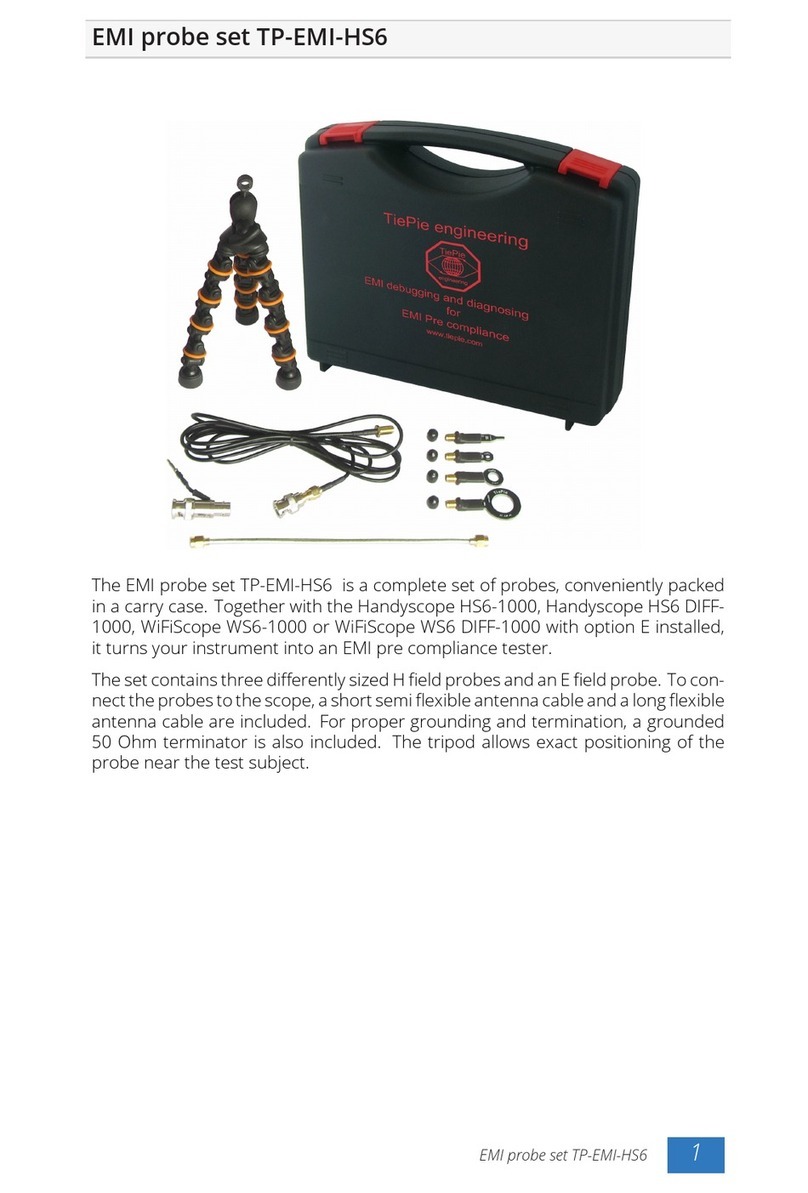
TiePie
TiePie TP-EMI-HS6 User manual
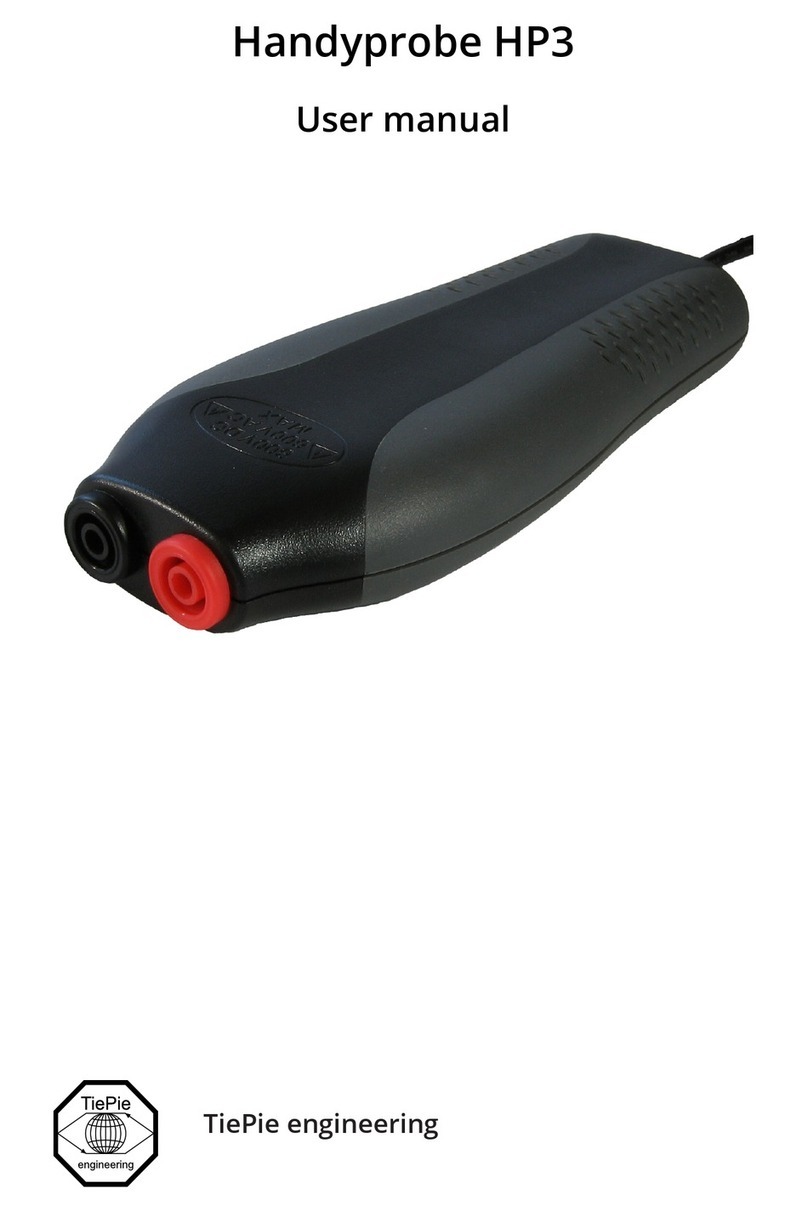
TiePie
TiePie Handyprobe HP3 User manual
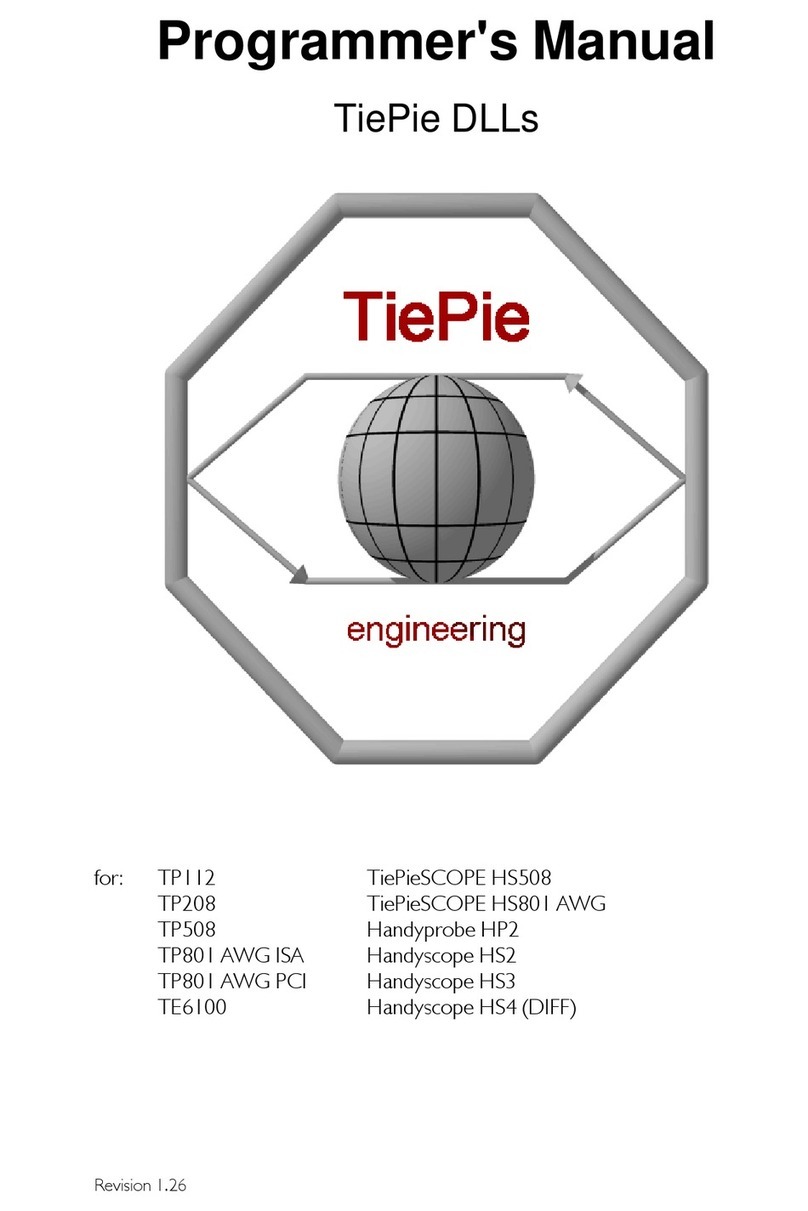
TiePie
TiePie TP112 Operating and maintenance manual
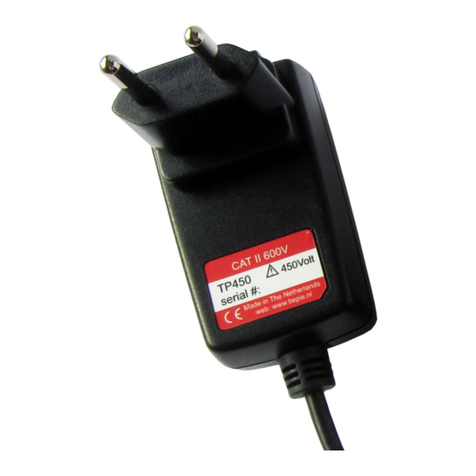
TiePie
TiePie Handyscope TP450 User manual
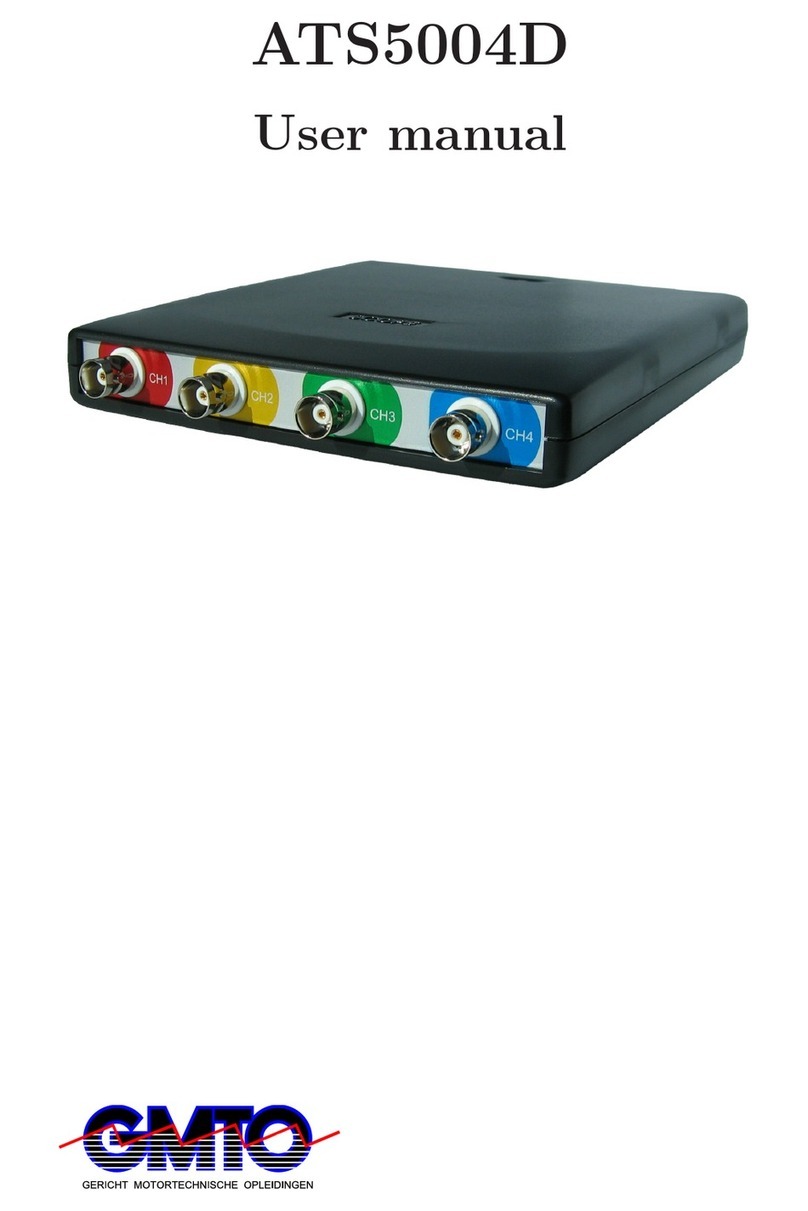
TiePie
TiePie GMTO ATS5004D User manual
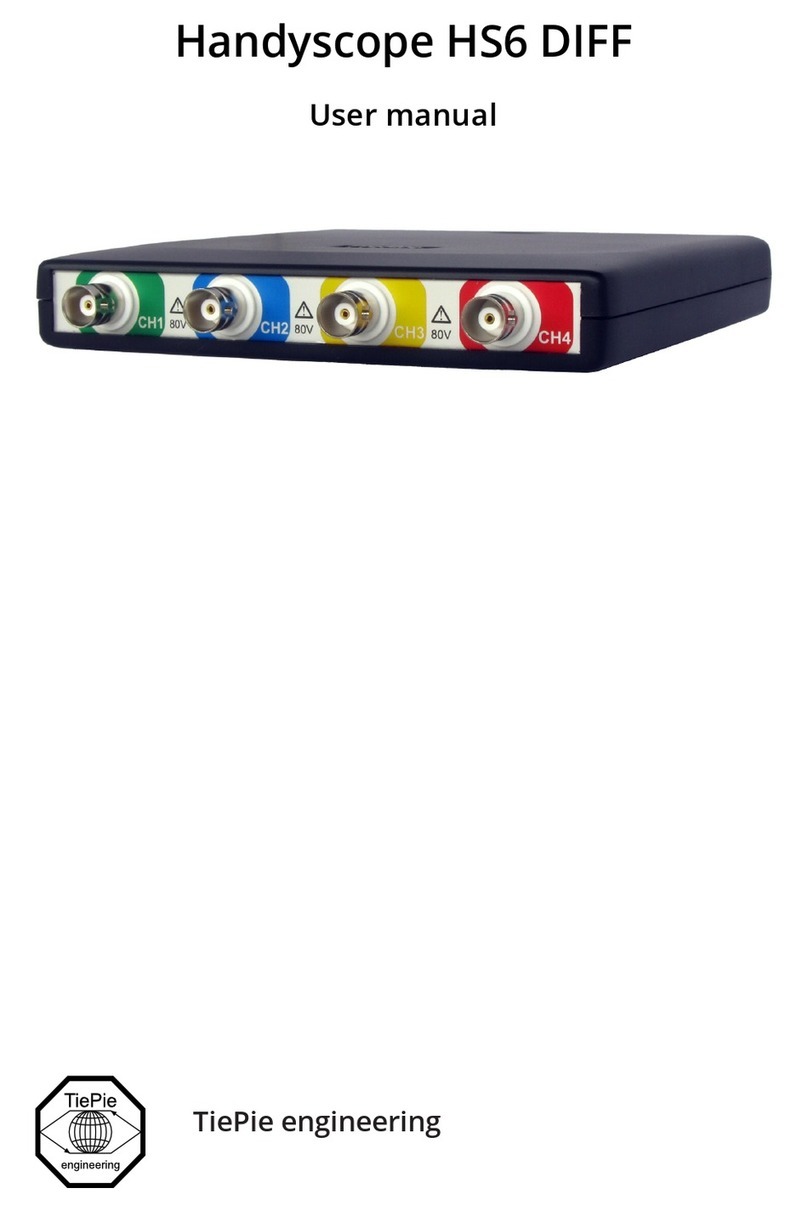
TiePie
TiePie Handyscope HS6 DIFF Series User manual
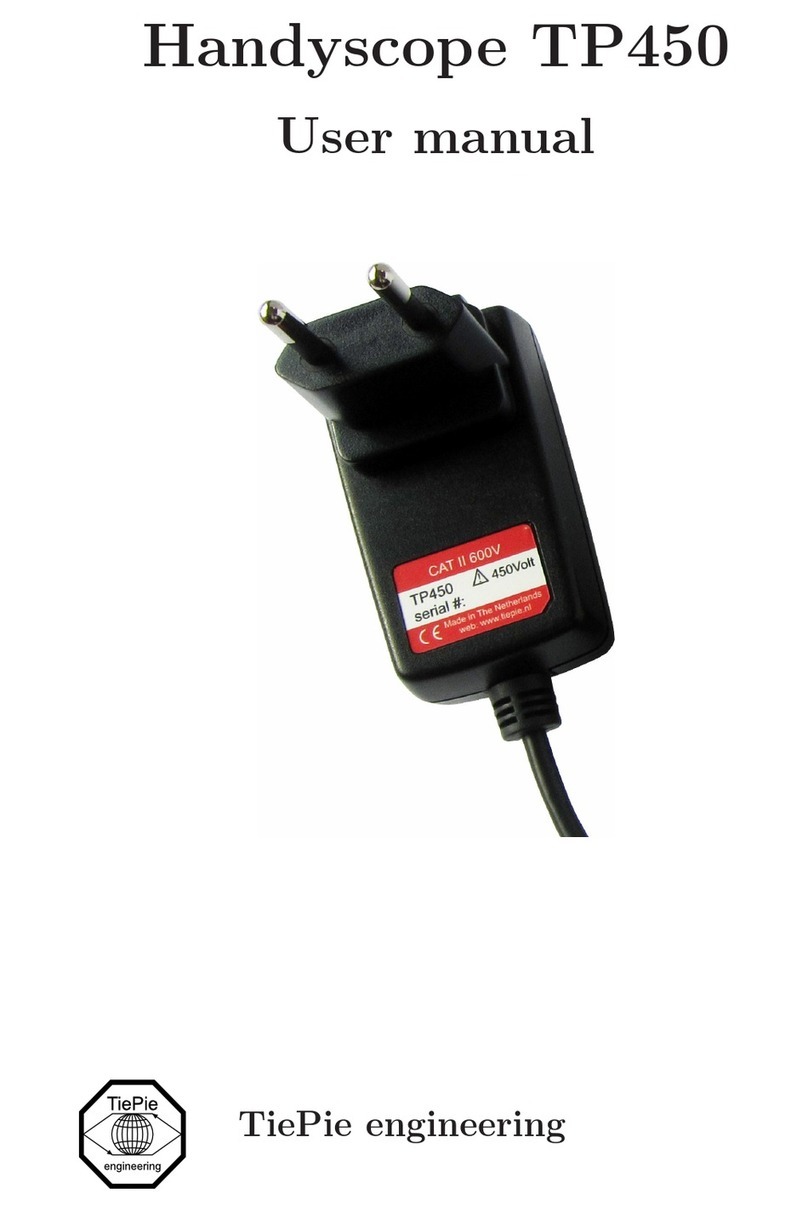
TiePie
TiePie Handyscope TP450 User manual

TiePie
TiePie Handyscope HS4 User manual
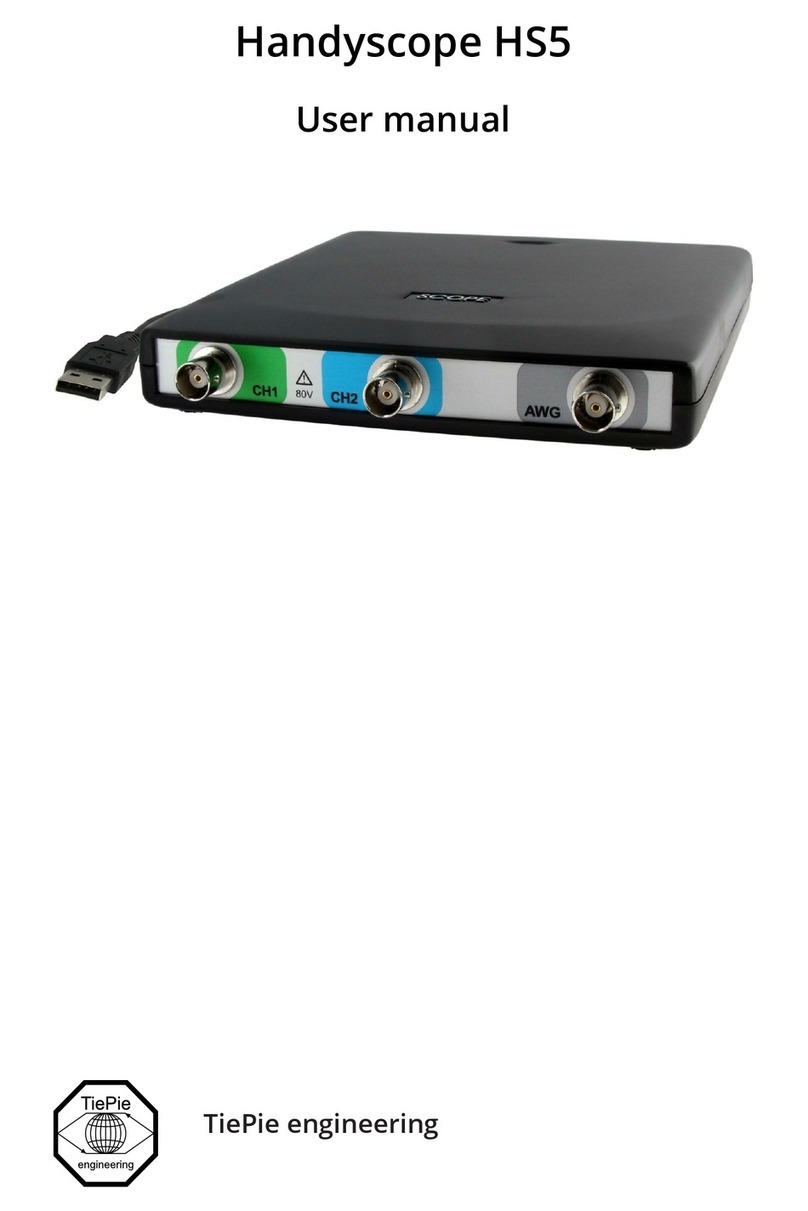
TiePie
TiePie Handyscope HS5 series User manual

TiePie
TiePie Handyscope HS5 series User manual

